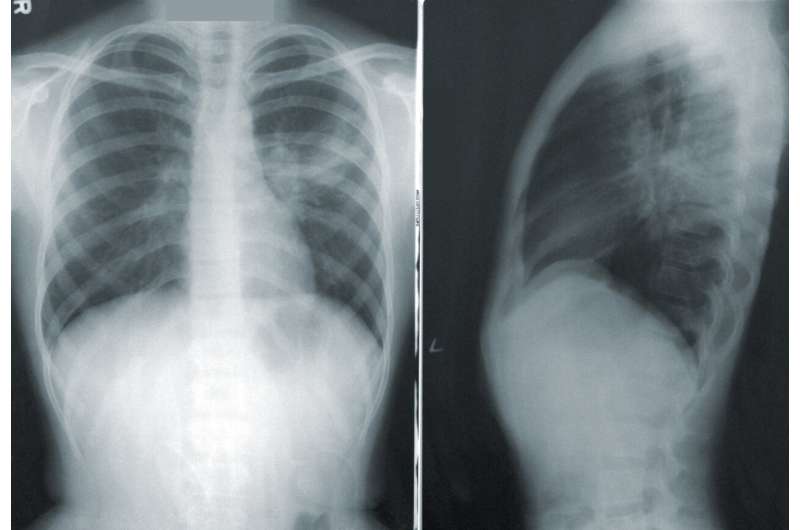Chronic lung disease remains major public health problem, especially in less developed countries

Globally, chronic lung disease (COPD) accounted for over 212 million cases, 3 million deaths, and 74 million years lost to ill health or disability in 2019, finds an analysis of the latest data from over 200 countries and regions in The BMJ today.
The findings show that while age-adjusted rates of COPD have declined over the past three decades, absolute counts are on the rise, with smoking and air pollution contributing to most of the health burden, especially among men.
And with aging populations, COPD will continue to become an even greater problem in the future, warn the researchers.
Chronic obstructive pulmonary disease (COPD) is the name for a group of common lung conditions that cause breathing difficulties. It mainly affects middle-aged or older adults who smoke or have a smoking history, and although preventable, once established, it cannot be cured.
But previous estimates of COPD have been limited to specific risk factors or confined to local areas and now require updating.
So researchers used data from the Global Burden of Disease Study 2019 to update estimates of prevalence (cases), deaths and disability adjusted life years (DALYs)—a combined measure of quantity and quality of life—due to COPD for 204 countries and territories between 1990 and 2019.
For this study, the Global Initiative for Chronic Obstructive Lung Disease (GOLD) definition of COPD was used.
Data were assessed by age, sex and sociodemographic index—a measure that identifies where countries or regions sit on the spectrum of development, ranging from 0 (least developed) to 1 (most developed).
Their results show that in 2019, COPD accounted for 212.3 million cases, 3.3 million deaths and 74.4 million DALYs globally.
When ranked according to age (age standardized), cases, deaths and DALY rates were 2,638, 42.5 and 926 per 100,000 population; 8.7%, 41.7% and 39.8% lower than in 1990, respectively.
In 2019, Denmark, Myanmar, and Belgium had the highest age standardized COPD cases, while Egypt, Georgia, and Nicaragua showed the largest increases in age standardized cases across the study period.
In 2019, Nepal and Japan had the highest and lowest age standardized death rates per 100,000, respectively, and Nepal and Barbados had the highest and lowest age standardized DALY rates per 100,000, respectively.
In men, the global DALY rate of COPD increased up to age 85-89 years, and then decreased with advancing age, whereas for women the rate increased up to the oldest age group (95 and over).
Smoking was the leading risk factor for disability due to COPD, contributing to 46% of DALYs, followed by pollution from ambient particulate matter (21%) and occupational exposure particulate matter, gases and fumes (16%).
At the country level, in 2019, the burden of COPD increased with increasing socioeconomic development up to a sociodemographic index of about 0.4, before decreasing again.
One possible reason for this is that exposure to air pollution (the leading cause of lung disease) is growing for countries with a lower sociodemographic index and decreasing for countries with a higher sociodemographic index, say the researchers.
They point to some study limitations. For example, only a small number of high quality epidemiological databases were available to estimate the burden of COPD, while some risk factors, such as genetic predisposition—although rare—could not be taken into account. Differences in disease definitions and a high probability of COPD underdiagnosis in many countries may have also affected the results.
These limitations highlight the importance in improving the accuracy of data collection and the use of more integrated case definitions, which would make comparisons between countries more valid, note the authors.
Nevertheless, they say this study provides up-to-date and comprehensive estimates of the levels and trends associated with COPD and its risk factors at the global, regional and national levels, between 1990 and 2019.
They conclude, "Despite the decreasing burden of COPD, this disease remains a major public health problem, especially in countries with a low sociodemographic index. Preventive programs should focus on smoking cessation, improving air quality, and reducing occupational exposures to further reduce the burden of COPD."
More information: Burden of chronic obstructive pulmonary disease and its attributable risk factors in 204 countries and territories, 1990-2019: results from the Global Burden of Disease Study 2019, The BMJ (2022). DOI: 10.1136/bmj-2021-069679




















